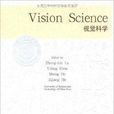基本介紹
- 書名:視覺科學
- 作者:侯建國 呂忠林
- 出版日期:2009年5月1日
- 語種:簡體中文, 英語
- ISBN:9787312022197
- 外文名:Vision Science
- 出版社:中國科學技術大學出版社
- 頁數:530頁
- 開本:16
- 品牌:中國科學技術大學出版社
內容簡介
圖書目錄
The History and Current Status of Vision Research at USTC
Preface
Section Ⅰ Visual Neurosciences
Pre-cortical Processing
Chapter 1 Rapid BDNF-induced Retrograde Synaptic Modification in A Developing Retinotectal System
Chapter 2 Ectopic Expression of A Microbial-Type Rhodopsin Restores Visual Responses in Mice with Photoreceptor Degeneration
Chapter 3 Organized Arrangement of Orientation-Sensitive Relay Cells in the Cat's Dorsal Lateral Geniculate Nucleus
Chapter 4 The Nucleus Isthmi and Dual Modulation of the Receptive Field of Tectal Neurons in Non-mammals
Chapter 5 Direct Visualization of the Dendritic and Receptive Fields of Directionally Selective Retinal Ganglion Cells
Chapter 6 Functional Alignment of Feedback Effects from Visual Cortex to Thalamus
Chapter 7 Perceptual Learning and Top Down Influences in Primary Visual Cortex
Chapter 8 A Processing Stream in Mammalian Visual Cortex Neurons for Non-Fourier Responses
Chapter 9 GABA and Its Agonists Improved Visual Cortical Function in Senescent Monkeys
Chapter 10 Pattern and Component Motion Selectivity in Cortical Area PMLS of The Cat
Chapter 11 Feature-based Attention Modulates Orientation-selective Responses in Human Visual Cortex
Chapter 12 Filling-in of Visual Phantoms in The Human Brain
Chapter 13 Categorization Training Results in Shape- and Category- Selective Human Neural Plasticity
Chapter 14 Reversible Blockade of Experience-dependent Plasticity by Calcineurin in Mouse Visual Cortex
Chapter 15 The Coordinated Mapping of Visual Space and Response Features in Visual Cortex The Ocular-motor System
Chapter 16 Characteristics of Near Response Cells Projecting to the Oculomotor Nucleus
Chapter 17 Premotor Commands Encode Monocular Eye MovementsChapter 18 Reliability of Oculomotor Command Signals Carried by Individual Neurons
Section Ⅱ Visual Perception & Cognition
Chapter 19 Orientation-selective Adaptation and Tilt After-effect From Invisible Patterns
Chapter 20 Perceiving Distance Accurately by A Directional Process of Integrating Ground Information
Chapter 21 Topological Structure in Visual Perception
Chapter 22 The Mechanism of Isoluminant Chromatic Motion Perception
Chapter 23 Primal Sketch: Integrating Structure and Texture
Chapter 24 Parallel and Competitive Processes in Hierarchical Analysis: Perceptual Grouping and Encoding of Closure
Chapter 25 Visual Working Memory in Decision Making by Honey Bees
文摘
The present study is arguably the most exhaustive to date. We believe thatsome of the disagreements described above are more apparent than real andmay have resulted because previous studies included only relatively smallsamples of cells and, thus, differences in laminar location, eccentricity, polarangle, cell type could not be adequately controlled. For example, our findingsthat relay cells preferring different orientations are clustered and that radialand tangential orientations are overrepresented makes claims regarding theoverall distribution of preferred orientations based upon small samples of cellsespecially hard to interpret. For example, if cells are recorded mainly fromregions of the LGNd subserving the horizontal and vertical meridians, then anapparent preponderance of these orientations should result. Our finding thatthe radial bias is strongest in regions of the LGNd subserving the horizontalmeridian further complicates matters.
It should be noted that our results are generally consistent with the ideathat the orientation-sensitive response of most LGNd cells is a direct reflectionof their retinal inputs (Soodak et al., 1987). Evidence for this stems from ourfinding that the overall distributions of the orientation biases of LGNd cells aresimilar to those reported previously for retinal ganglion cells (Levick andThibos, 1982; Leventhal and Schall, 1983) and that the receptive fields ofmost of the cells we studied were consistent with the model proposed by Soodaket al. (1987). Our results do not support the idea (Vidyasagar and Urbas,1982; Vidyasagar, 1984) that LGNd relay cells are much more orientationsensitive than their retinal inputs. However, it should be noted that some ofthe most orientation-sensitive cells we studied exhibited "butterfly-shaped"orientation tuning curves even at relatively low spatial frequencies. A number

